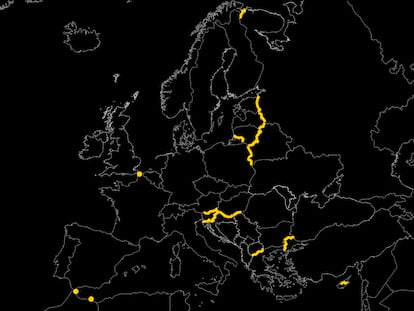The Europe that has been created by another war: a 1,700-mile-long journey through a rattled continent
From Ukraine to Ireland, EL PAÍS takes a look at the future of a region that has been shaken by conflict. “We will never be what we once were,” says Roberta Metsola, president of the European Parliament
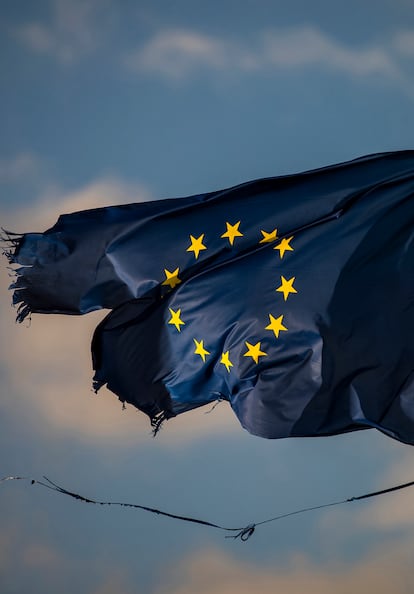
There is no escape. No matter how far we venture from the front — and until the last day of the journey from east to west across the continent — the war doesn’t stop sending signals. It refuses to let go — it wants to destroy the illusion of a Europe in eternal peace, a Europe in which words such as “trenches” or “nuclear bombs” are relegated to the history books. Now, it’s as if we’re beginning to look at a different future: that of a permanent post-war era.
We traveled from war-torn Ukraine to the western tip of Ireland. When we reached our goal, one day in the middle of April, we had breakfast while reading a five-column headline on the front page of The Irish Times: “Achill Island man killed battling Russian forces in eastern Ukraine. Finbar Cafferkey was a military volunteer with previous combat experience in Syria.”
The echoes of the fighting have reached the cliffs of Achill Island, which was home to Cafferkey. There are more sheep than humans on this island, which lies off the west coast of Ireland, on the Atlantic. In the last village before the final mile of road, Gielty’s Bar and Restaurant bills itself as “the most westerly pub in Europe.” The yellow-and-blue Ukrainian flag flies in the parking lot. The frontline is 2,500 miles away.
War breaks out one day and nothing is ever the same. The Russian invasion of Ukraine — which began on February 24, 2022 — is shaping a new continent, with new landscapes. This journey begins in Eastern Europe — where air raid sirens go off several times a day — and it ends on Achill Island. EL PAÍS covered six countries and 1,700 miles from one end of the continent to the other, in search of the Europe that will emerge from this war.
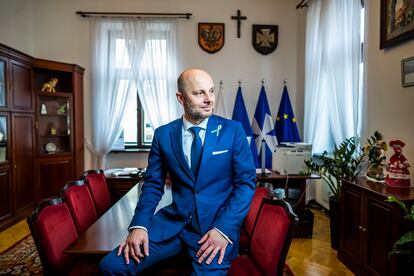
Rzeszów, a city in full boom
“Everything has changed. Completely.”
The speaker is a local Polish politician, a 46-year-old man who unexpectedly found himself in charge of Rzeszów’s city hall two years ago — the last city before Poland’s border with Ukraine. The previous mayor left office for health reasons and elections were called. He — Konrad Fijołek — won the vote. In his office in the neo-Renaissance building that is the municipal hall, he explains that, back then, neither he nor the city were prepared for what was to come. His expectation of elected office was modest: oversee the administration of the municipality, which doesn’t even have 200,000 inhabitants. But after Russian President Vladimir Putin attacked the neighboring country, he — without meaning to — transformed Rzeszów. Following the invasion, the city welcomed 100,000 Ukrainian refugees. At the small airport — which is protected by American missiles — Western weapons are arriving, before heading to Ukraine by road.
Rzeszów is a city that’s booming. The hotels are full and there are no apartments left to rent. Steakhouses and barbecue restaurants dominate the historic center. Mayor Fijołek hasn’t stopped working since the invasion, holding daily meetings with foreign politicians, diplomats and journalists. “We’re at the center of a new historical cycle,” he notes.
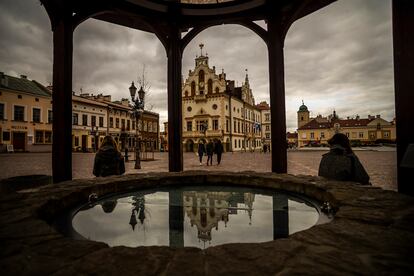
“A little like 1989”
The same thing that has happened to Rzeszów and its mayor has happened to Europe and Europeans. Roberta Metsola — a 44-year-old citizen of Malta, who is married to a Finn — is the president of the European Parliament. At a stop in Brussels on this transcontinental trip, she clearly states: “We will never be the same again. We will never be what we were before February 24, 2022.” As Dutch essayist Luuk van Middelaar points out, 2022 was “a little 1989… it belongs to these great events that alter the balance within the continent.”
In 1989, the Berlin Wall fell and, with it, the pro-Soviet dictatorships in Central and Eastern Europe. Liberal democracy had triumphed; Europe was reunified. In 2022, the situation is quite different. In a world that has seen the attacks of September 11, 2001 and the decades of war in Iraq and Afghanistan — along with the financial crisis and the COVID-19 pandemic — the nuclear power that lost the Cold War has invaded Ukraine. War returns to Europe, as does the authoritarian threat.
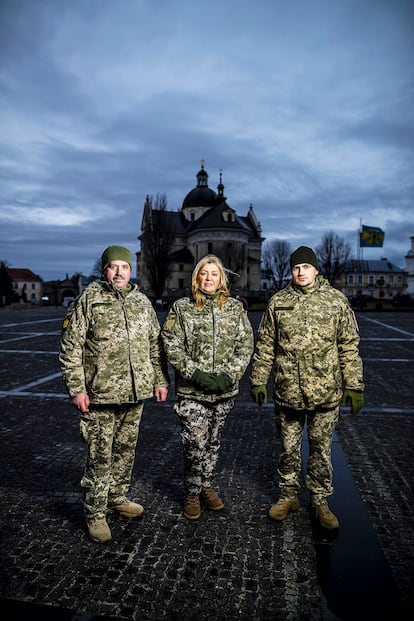
“History goes round and round. The place you’re heading to is very strong. It reminds us that conflicts start in small towns and spread across borders, and that we must always be vigilant. Let’s not forget history.”
On the phone from London, Philippe Sands — a lawyer and writer — offers this bit of advice before we arrive in a place that he knows well: Zhovkva. His maternal grandfather’s family — who were exterminated in the Holocaust — came from this village in western Ukraine. Hersch Lauterpacht was also born there, in 1897 — he’s the jurist to whom we owe the concept of crimes against humanity. Lauterpacht is also one of the protagonists of Sands’ book, East West Street: On the Origins of Genocide and Crimes against Humanity (2016). In Zhokvka — which has been, at varying points in history, Austro-Hungarian, Ukrainian, Polish, German and Soviet, bearing the names “Zółkiew” and “Nestorov” — the journey begins.
- Preliminary note. Between February and April 2023, the photographer and editor of this piece crossed Europe by plane, car, ferry and train. They didn’t travel the route between Ukraine and Ireland in a single stretch: at the end of each stage, they returned to their home bases for a few days — the first to Madrid, the second to Paris. Then, they went back out on the road. Dozens of meetings and conversations, thousands of photographs and six full notebooks offer up the conclusion that no one really knows what will be the outcome of this war… but the trip has allowed for EL PAÍS to get a sense of the landscapes following the invasion.
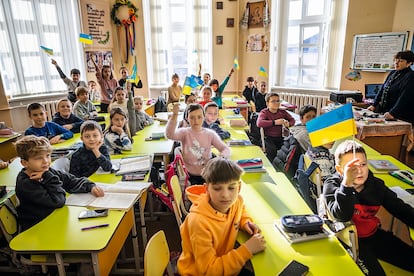
The school flag
“What do we have in Ukraine?” the teacher asks.
“War!” the students respond.
“Who are we fighting against?”
“Against Russia!”
“Who will win?”
“Ukraine!”
It’s a sunny February morning in this part of western Ukraine. A few minutes ago, a hundred students in Zhovkva — between the ages of 10 and 12 — saluted the flag in the school’s courtyard, as they do every Monday. Now, they sit in the classroom, listening to the visiting journalists. They raise their hands to explain that an uncle, a father, a cousin is at the front, hundreds of miles from here. The war is both far and close.
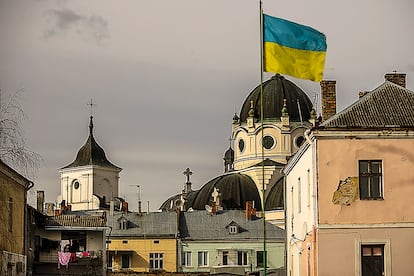
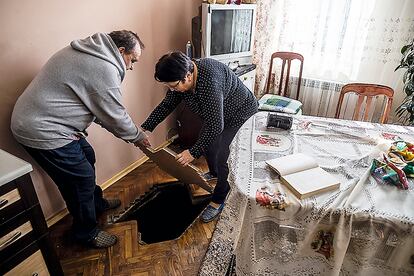
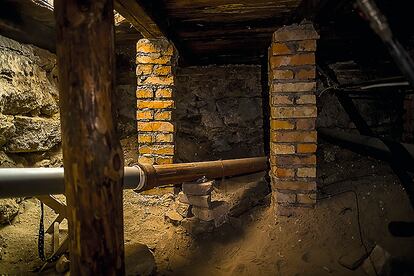
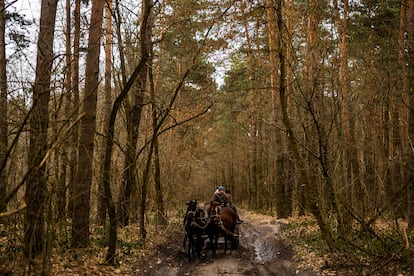
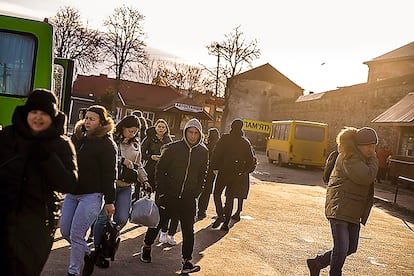
"They are our heroes"
A walk through Zhovkva reveals a town that bears many scars from the 20th century (and some from the 21st). In front of a 16th-century castle in the main square, three soldiers walk.
In a corner of the cemetery, blue-and-yellow national flags fly over the graves of the fallen. A tombstone reads: “Sluka, Petro Bohadonovych, 09.10.1981-04.02.2022.” Another: “Stanko, Andryi, 02.20.1988-04.03.2022.” They died in the first weeks of the war, within a day of each other. The woman who stands in front of the graves knew them both — they were the children of her friends: “They are our heroes.” When the air raid sirens go off, no one flinches.
On the facade of the town hall are the flags of Ukraine and Europe. There’s also a portrait of the revered Stepan Bandera — an ultranationalist leader in the 1930s and 1940s who was initially associated with the Nazis, although they eventually put him in a concentration camp.
In the local history museum, there’s a photo that shows the entrance of the town in the 1940s, during the German occupation. A banner reads: “Heil Hitler.” It’s an uncomfortable truth in this part of Europe, where the victims of invasion were, in many cases, accomplices of the executioners.
Few Zhovkva residents visit 53 Lviv Street. This is natural: nothing attracts attention when crossing the threshold of the house, not even in the room where the Dobrohodskiys sit. Serhii, 67, is a retired policeman. Iryna, 64 — the woman from the cemetery — used to work as an economist with the local government administration. They’ve lived in their house for 30 years… 30 years living on top of a dark void. The void is real; it’s underground, right beneath their feet. It’s also metaphorical, representing the cloudy past that nobody likes to look at.
“Can we see it?”
“Sure.”
Serhii and Iryna push a table away, pull back the rug. They raise the hatch, hidden in the parquet floor. Downstairs is a dark and dusty room. You need a flashlight to see anything. And you have to bend down to walk — the ceiling is no more than five feet high.
Here, under the living room of this house — which once belonged to the Becks, a German-Polish family — 18 Jews from Zhovkva hid between 1942 and 1944. Clara Kramer — one of the girls who lived in the shelter — would recount this experience years later, in a book. She also returned to visit the house that she had hidden under.
“It’s important to know what happened here for two reasons,” says Iryna. “First, to show how terrible war is. And second, to point out that, even in dire circumstances, we can help each other. If the Nazis had known that there was a Polish family hiding Jews, they would have killed them.”
Iryna and Serhii say that, in Zhovkva, people know the story… but they’re not interested. Visitors who are interested in the space beneath their house tend to be foreigners, who visit from around the world.
- Note number 1. The past never ends in Europe — in reality, it’s always present. Memory — as the French Protestant philosopher Paul Ricoeur would say — is the delicate balance between the excesses of forgetting and the abuses of memory. This is the raw material that makes up European identity.
Clara Kramer and the 17 other people holed up in the Beck house escaped the worst. They were the exception in Zhovkva. On March 25, 1943, the Nazis rounded up more than 3,000 Jews, took them to a forest a mile away from the town center and shot them. Of Zhovkva’s Jews — who made up nearly half of the town’s original population — only 74 survived.
It’s not easy to find the memorial in the forest. The sky has clouded over: it’s raining. This is a huge cemetery with no graves. The heart of what historian Timothy Snyder called the “bloodlands” — the piece of Europe where, between 1933 and 1945, Hitler and Stalin murdered 14 million people: Jews, Ukrainians, Poles, Soviets.
The past is both near and far.
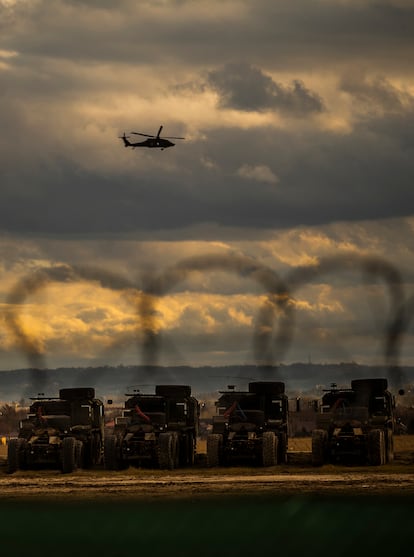
Military paradox
Paradox: after crossing the border into Poland, the war in Ukraine seems closer than in Ukraine itself. In Zhovkva and neighboring Lviv — the largest city in western Ukraine — the echo of artillery and missiles is remote. The Polish city of Rzeszów, on the other hand, is a militarized city — and an Americanized one.
Planes take off and land every day from the airport — soldiers come and go between announcements of flights to Warsaw or Manchester. Academic debates about the future of NATO and whether Europe should spend more on weapons were settled in one fell swoop in the winter of 2022, when Putin invaded Ukraine. Poland felt like it could be next. Today, Rzeszów is the military capital of the EU. And Poland — a Eurosceptic and nationalistic country — is the center of gravity in a continent that, in the coming years, could welcome a dozen more members from its eastern flank.
- Note number 2. The landscape of Europe’s future will surely look more like the monotonous plain between the Oder and Dnipro rivers, rather than vineyards on the banks of the Rhine, a steel plant on the Moselle, a Haussmannian avenue in Paris, or a port in the Mediterranean. The Europe that will emerge from this war is less Franco-German and more Eastern. More militarized and attached to the protective umbrella of Washington. But for how long? There is no guarantee that, after the 2024 presidential election, the next American president will continue to be interested in Europe. And which Europe are we talking about? Membership in the European Union is constantly changing. An EU that includes Ukraine — and, along with it, possibly a dozen new countries in the Balkans and Eastern Europe — wouldn’t only change Europe’s geography and institutions, but also its identity. And its relationship with the world: with the United States, which is moving away; with Russia, which will not budge.
“Ukraine is fighting for our freedom,” says Mayor Fijołek, who is fervently pro-European and an opponent of the nationalist government in Warsaw. “We don’t want to have Russian soldiers along our border.” When asked if he’s fearful, he replies: “Yes, but only a little. We know that we’re supported by NATO and all of Europe.” And the USA? “A guarantee of security,” he affirms.
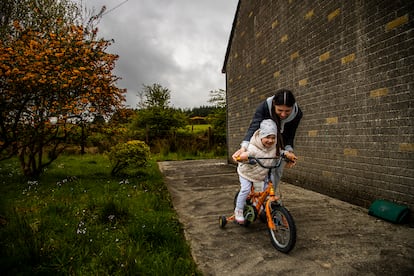
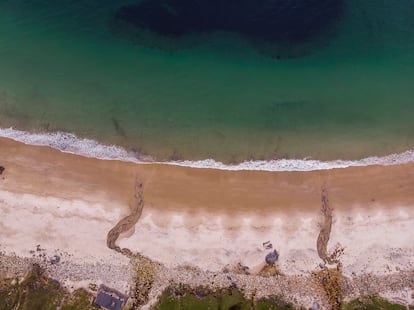
Kantians, not Hobbesians
The Russian invasion of Ukraine — like the pandemic three years ago — turned everything upside down. Before, the world discovered its fragility in the face of an invisible virus. Now, Europe discovers that the Pax Europea — the extended period of relative peace that followed World War II — was a chimera. Nobody is safe.
“It’s the rediscovery of war, conflict and suffering on a large scale,” explains Arancha González Laya — dean of the Paris School of International Affairs at Sciences Po and Spain’s former foreign minister — in Paris. “We already had it to a large extent during the breakup of Yugoslavia. But now, we’re not talking about a disintegration, but about the invasion of one country by another, about a return to wars such as the First or Second World War… this is a shock for European citizens.”
There’s an idea circulating — that Europe was Kantian and must become Hobbesian. The continent believed that respect for institutions and the law could guarantee perpetual peace — advocated for by Immanuel Kant — and that war as a hypothesis could be ruled out. But now, Europe realizes that the world is dangerous and that what really counts is the language of force.
“We haven’t become Hobbesians, but responsible Kantians,”González Laya points out. “We continue to prefer peace and a system that aims to maintain peace, security, stability. But today, we know that, in order to achieve that Kantian ideal, we need to invest in the defense of European interests with more muscle than before.” The former minister adds that she doesn’t “believe this [narrative] that says that we all now have to become neoconservatives in order to defend European interests. It’s not the model of a military power seeking to project its military power on the rest of the world because it wants to be a hegemonic power. That’s not our project.””
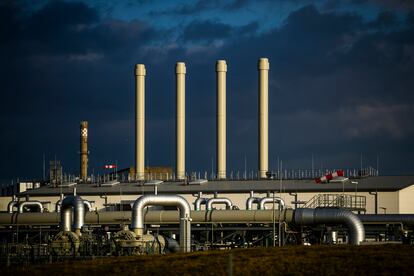


"He's an actor"
There is no more Kantian country in Europe than Germany — and perhaps there is no region more hostile to this war than the territories of the extinct German Democratic Republic. We found this sentiment in the northeastern corner of Germany, next to the border with Poland:
“The one who is provoking the war is Zelensky.”
“I don’t trust him.”
“He’s an actor.”
“Sometimes, I think that he works with Putin, hand-in-hand.”
Two women are having a chat at a table at Zum Anker, a tiny fish restaurant on the beach in Lubmin, Germany. From here, you can see the clear sea and sky after the morning storm. The white cliffs of the island of Rügen line the horizon. It’s a slow post-meal conversation on a March day.
Lubmin, with 2,000 inhabitants, looks like one of the many towns on the German Baltic coast, with its wooden houses and family hotels, where nothing ever happens. But that impression is wrong. For a year now, everything has gone through Lubmin. The explanation can be found at the end of the deserted beach, a couple of miles on foot along the promenade, beyond the marina and the forest.
Crossing the forest is like entering another world. There’s suddenly an industrial area; in the distance, there’s the old nuclear plant, which shuttered after the Iron Curtain fell. Neptune is docked in the port — at 928-feet-long, the ship processes liquid gas that arrives via sea from other parts of the planet. Beyond it are the Nord Stream 1 gas pipeline facilities — inaugurated in 2011 — and Nord Stream 2, which has never come into operation. In September of 2022, an attack destroyed the project’s infrastructure under the Baltic Sea. While several theories have circulated about the authorship of the blast, none are conclusive.
Submarine gas pipelines from Russia were meant to ensure Germany’s energy supply. The gas landed in Lubmin, passed through these facilities and, from there, left for the rest of Germany. Not anymore.
“Lubmin is in the spotlight now, and it’s not for good reasons,” says Erik von Malottki. Originally from this part of Germany, the 36-year-old entered adulthood after the fall of the Berlin Wall. A Social Democrat, he’s a member of the German Bundestag (the federal parliament) and a historian by profession. For as long as he can remember, Lubmin had specialized in power production: first with atomic energy, then with natural gas.
In the post-Soviet years, Russia offered cheaper gas than other suppliers. Germany — under the leadership of Chancellor Gerhard Schröder (1998-2005) and his successor, Chancellor Angela Merkel (2005-2021) — believed that closer trade ties with Russia could strengthen political ties, while bringing Russia closer to Europe would ensure peace on the continent. In the end, the opposite happened. The millions and millions of euros that Germany sent to Moscow for gas on a daily basis served to feed the Russian state and its war machine. Was Lubmin — the picturesque Lubmin, with its beach bars, little hotels and pensioners — Putin’s secret weapon?
“Everybody says that this made the war easier, although I’m not sure that’s the case,” cautions Von Malottki. Although, he admits, “it didn’t stop it, either.” The member of parliament says that, in the region, there’s a feeling that residents have been made into scapegoats — as if they were the ones who threw themselves into Putin’s arms, rather than the majority of Germany’s political class.
Ben Fredrich — a journalist from Lubmin and founder of the daily newspaper Katapult — explains: “Here, they’re pro-Russian for historical reasons; they have the idea that the German Democratic Republic [or East Germany] wasn’t so bad. The same goes for my family — if you criticize Russia, it’s like criticizing their children.” For this reason Fredrich no longer speaks with several of his relatives. He explains that many local politicians affiliated with the Social Democratic Party cancelled their subscriptions to Katapult after the daily published an article accusing the regional president — Manuela Schwesig — of having “co-financed” the Russian massacre in Bucha, on the outskirts of Kyiv.
Germany, after the invasion, changed directions: the government announced an increase in military spending, delivered weapons to Ukraine, sanctioned Russia with its European partners and freed itself from energy dependency on Putin. The country has embarked on something very German: a self-examination of its mistakes and sins.
- Note number 3. Ukraine is transforming Germany: its relationship with Russia, its sources of energy, its economy and its attitude towards war. And, inevitably, the changes in Germany — the richest and most-populous country in the European Union — transform the club, which, over the last 15 years, has overcome a financial crisis, the migrant crisis in 2015, the departure of the United Kingdom and a pandemic. Now, the EU is contending with the invasion of Ukraine and the arrival of millions of refugees from this country.
In the Zum Anker café, the two women continue their discussion:
“If Putin shoots a couple of rockets at us, we’ll have war here.”
“I don’t agree with giving arms to Ukraine. In other countries, they protest over little things. Not in Germany.”
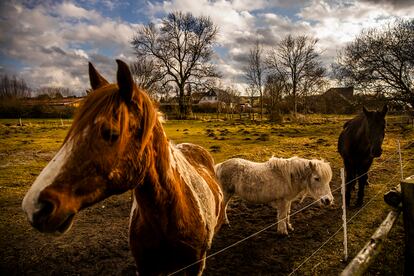
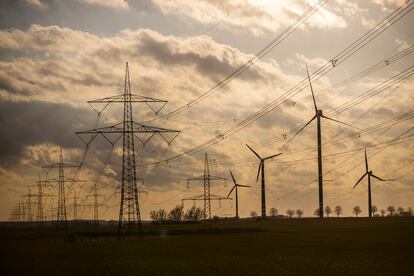
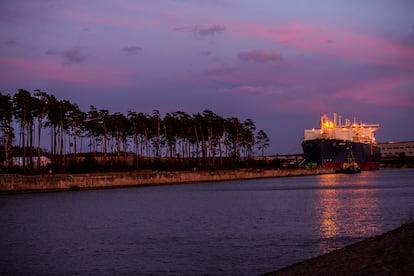
Barricades and burning garbage
It’s possible that the ladies in Lubmin were thinking of France. Throughout the winter and into the spring, protests against pension reform and violent incidents made headlines in the European media. In France — the other European powerhouse, along with Germany — the government, the opposition and society are busy with something other than Ukraine.
The barricades and piles of burning rubbish, the hundreds of thousands of workers and young people who took to the streets… none of this was to protest Putin, nor was it to defend him (although inflation has contributed to the general malaise, with war having exacerbated prices). In France, at least, Putin and Zelensky have totally disappeared from the equation. The target of the protests was someone else: President Emmanuel Macron. The left and the extreme-right took to the streets of Paris to challenge him. There has been anger about the future of the country’s social model and the impoverishment of the middle class, along with anguish over inflation and despair about a future with no prospects. But this is another story.

“It’s not my war”
The journey continues. The MS Scania ferry — which left the Polish port of Świnoujście more than two hours ago — is sailing across the Baltic Sea towards the Swedish city of Ystad. Three men sit at the slot machines in the ship’s casino; others drink beer in the bar in front of the TV, which is showing a ski competition. These men aren’t tourists — they’re Polish bricklayers working in construction in Sweden. One man is accompanying his father to close a bank account, after years of working in Sweden. There’s also a trucker headed to Stockholm. When asked about Ukraine, he shrugs. “It’s not my war.”
It’s pitch-black outside — the cabin is dark. In a few minutes, the ferry will pass over the destroyed, inoperative gas pipeline — the front of the invisible war. At dawn, the ferry docks in Ystad. Next destination: Sjöbo, in the Swedish province of Scania, in the south of the country.
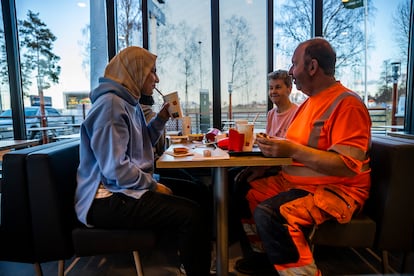
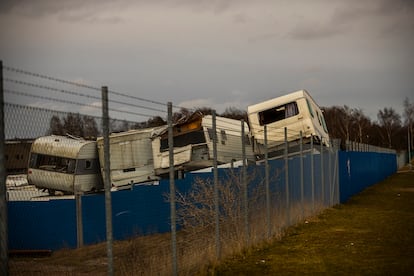
“People are afraid”
The idea of visiting this town of 20,000 inhabitants in the middle of the Swedish countryside comes from a fictional character: Inspector Kurt Wallander. In Faceless Killers (1991) — the crime novel by Swedish writer Henning Mankell — Wallander says: “Insecurity is only increasing in this country. People are afraid. Especially in the countryside, like this region. It won’t take you long to realize that there’s a great hero around right now. A man who is applauded in secret, behind the curtains. The one who has taken the initiative of a municipal referendum to prohibit refugees from coming to settle in the town of Sjöbo.” Wallander was talking about Sven-Olle Olsson — a man who, years after his death, is still a subject of discussion.
Sven-Olle Olsson was a farmer and municipal politician. He pushed for a referendum against refugees and won it with 64% of the vote. In that time and place — Sjöbo, 1988 — you could pinpoint the origin of the movement that has ended up becoming the second-largest electoral force in the whole country. This movement has broken the image of Sweden as a model of tolerance and equality.
Mankell already saw this phenomenon in his novels more than 30 years ago. And Nixi Orvoën — an artist, designer and seamstress — has also seen it in her years living in Sjöbo. Originally from Brittany, she came to Sweden at the age of 20, out of love for the country’s cinema. She met a Guinean musician, who had been a member of a band called Kebeckeise. They had a daughter together. After they separated, she and her daughter went to live near Sjöbo, in a wooded area.
“It’s magical,” she says, at the end of a morning walk, as she opens the door to her studio. It’s in a wing of a Rococo church, high up on a hill. There, she designs the clothes that she sells in shops and online — she also knits.
Orvoën tells EL PAÍS about something that happened to her granddaughter in the nursery: upon seeing that her skin was darker than theirs, the other children told her that she was dirty. She also recalls that, when she had a shop in the center of Sjöbo a few years ago, there were customers who told her that they had voted for the extreme right. They offered the following reasoning: “I live here, I do as my neighbor does.”
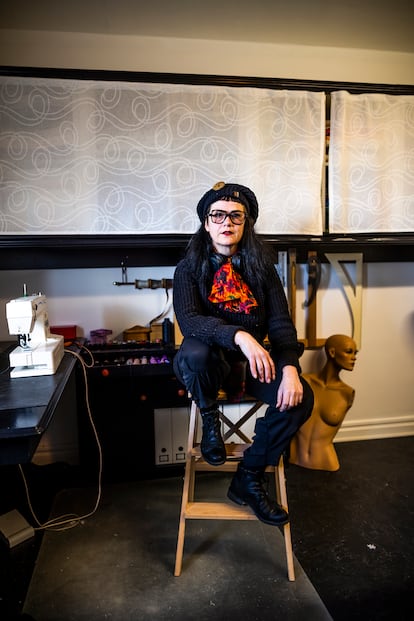
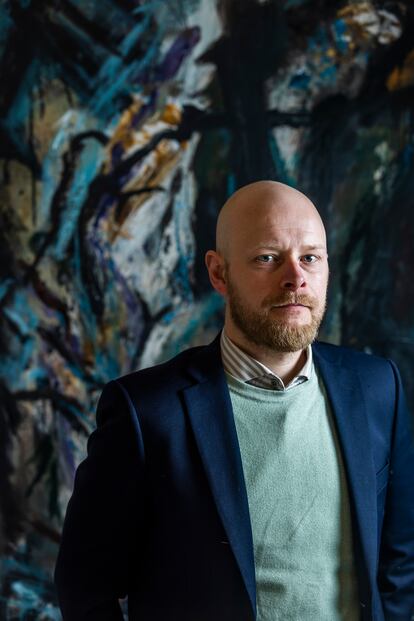
The radical new right
“The results in Sjöbo are, at the next election, the results in Scania and, after that, [the results] in Sweden. Here, we’re looking ahead, we’re doing it first.”
André Af Geijerstam feels the winds of history in his favor. The 37-year-old councillor is a land developer by profession. He smilingly says that he got into politics because he was “cheated.” In Sjöbo, he’s the leader of the local branch of the far-right Sweden Democrats.
In the last general election, in September 2022, the Sweden Democrats obtained 20.5% of the vote across Sweden. But in Sjöbo, they got more than 40%.
Sweden is no longer the Sweden that the rest of the world thought it knew. After the invasion of Ukraine, it abandoned its neutrality. It has also become the testing ground for the new radical right. In the 1990s and 2000s, the Sweden Democrats welcomed neo-Nazis into its ranks. The party’s roots are deep in the extreme right.
“That was 30 years ago!” Geijerstam defends himself. He adds: “There were Nazis among us, but we kicked them out. We’ve grown up a lot since that time… we were the only ones questioning immigration, so people who shouldn’t have [joined the party] joined up.”
The success of the Sweden Democrats has nothing to do with Ukraine — it precedes the invasion. According to Geijerstam, the party’s growth can be attributed to the fact that they spoke up about what others didn’t dare mention: insecurity and immigration.
The municipal councillor is clear about what to do regarding immigration: “Stop!” And what about refugees fleeing wars or political persecution? “You have to give them help in areas close to their countries,” he replies. “Ukrainians, of course, we have to help them: they’re close to our area.”
The surprising thing is that in thier fiefdom of Sjöbo the Sweden Democrats aren’t in charge: Geijerstam is in the opposition. In Stockholm, they participate in a coalition with the conservatives, liberals and Christian Democrats… although they have no ministers.
“In Sjöbo, they’re afraid of what I might find if I open all the cupboards and see what they’ve done, what they’ve spent the money on,” Geijerstam claims. It doesn’t seem to matter that there are few immigrants in Sjöbo and that calm reigns in the streets, without a trace of the insecurity that the extreme right warns about. But there is fear, as Inspector Wallander once said… and the habit of voting for the home party, as Nixi Orvoën reminds us.
- Note number 4. The certainties of the past have ceased to apply. Sweden wants to join NATO, the workers have defected en masse from the Social Democrats and, in the Scandinavian oasis of peace, consensus and moderation — perhaps the highest representation of “European values,” as has sometimes been said with smug self-satisfaction — the radical right is close to taking power. What it means to be European has been redefined: nationalist conservatism and euroscepticism aren’t foreign bodies to the continent… they are part of its identity.
“The Social Democrats have forgotten the working class. They talk about feminism, about environmental culture, about woke culture,” sums up the leader of the Sweden Democrats in Sjöbo, using the American term that accuses the new left of being focused on identity issues “That’s why we grow so much.”

“We have no other choice”
In Brussels, it’s an atypical sunny April day, at ten o’clock in the morning. At the European Parliament, on the ninth floor, Roberta Metsola — president of the institution since January of 2022 — admits: “For a long time, our mistake was to ignore populist rhetoric. The result was that [populism] grew. [2024 will be] my fifth European election. I’ve never believed that they should be ignored — [they should be] fought from the center.” Metsola — who belongs to the Christian Democrats — includes social democrats, liberals and environmentalists in this political center.
“The main task I have set is for people to continue to believe in politics. Politics can be a force for good. A reason to vote should still be found. If this doesn’t happen, then extremist and bigoted rhetoric takes over, and it’s scary. Anti-semitism is on the rise. Disinformation wins. This is what worries me.”
In 1989, Metsola was 10-years-old. She remembers the execution of Romanian dictator Nicolae Ceausescu on Christmas day. “1989 symbolized freedom, while this war [on Ukraine] is an invasion, an imperialist aggression.” The united European response to the war demonstrates, first, that “the EU or Europe is not only an economic bloc, but also one of security, with shared political values.”
February 24, 2022 is a date that — due to its consequences and symbolism — is comparable to 1989, or 9/11. “On this day, we realized that being part of the EU — not living under an autocracy, having territorial integrity — is something we cannot take for granted,” she affirms. “That’s why so many countries look to Europe as the only hope — we cannot look the other way.”
Metsola continues: “We have to make sure that we continue to help Ukraine. We’re entering a very difficult phase. Before, it was in the news every day. Not now. The other option would be to stop, because it’s gone on for too long, because defense budgets are already high, because people are nervous about the economic situation, even though the doomsday scenario hasn’t materialized… but we have no choice but to continue.”
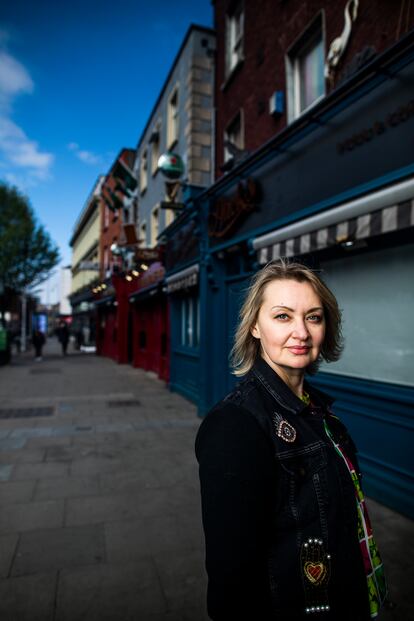
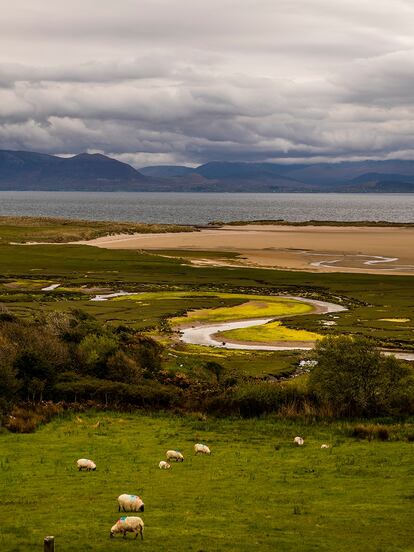
European flags in Ukraine; Ukrainian flags on Achill Island. There are few places in Europe as far removed from Ukraine as this beach on the western tip of Ireland. Beyond is the ocean — much later, America. It’s the end of the road after the journey through Europe. Some French tourists pass by, along with some North Americans. There’s no noise: just the waves and the cry of the sheep. For some time now, the Irish Ministry of Defense has regularly sighted Russian warships off these coasts. As the Ukrainian poet Victoria Melkovska said the day before in Dublin, “You can never leave the war behind, no matter how much you want to.”
Melkovska remembers what her neighbor told her one day. This woman was walking through the aisles of a supermarket. Nearby, another woman received a phone call. She picked it up and collapsed between sobs — they had told her that her son had died in the Ukraine. That woman — one of the more than 70,000 refugees that Ireland has welcomed this year — was pursued by war from one end of Europe to the other. Just like the family that stayed at Melkovska’s house in the first months of the war: a woman with two children who, in the first few days, never forgot to untie the laces before taking off their shoes — they left them ready to be put on quickly and they slept fully-dressed. They had gotten used to being vigilant in case the sirens went off.
The poet Melkovska arrived in Ireland 20 years ago. After a career as a radio journalist in the Ukraine, she wanted a change of scenery. She married an Irishman, raised a family. She has just published a collection of poems titled For the Birds. “In poetry,” she says, “you cannot hide.” The book begins with a poem in which family wounds are mixed with collective ones. It is titled Family Policy:
My father is like Russia: he hits first.
Hits hard. Hits where it hurts. Hits who
are incapable of answering with word or sword.
Strikes those who capitulate with pain,
in the midst of a pandemic, a heart attack, cancer.
Another poem includes a tribute to the Irish:
To put it simply:
if you accidentally step on someone
you hear a humble: “I’m sorry.”
A stranger will say “hello” to you for no reason.
And thank the bus driver
(I wonder why).
On Grafton — Dublin’s busiest street — a boy strums a guitar and sings a patriotic song. A couple stops to listen to him, smiling. Their names are Dymtro and Helen — they are 24 and 27-years-old, from Crimea, the peninsula that was annexed by Russia in 2014. They arrived three days ago, after a months-long journey that took them through Saint Petersburg and Turkey. They hug, they hum along.
A man dressed as a soldier approaches: Eugene Peschansky, 24, from Kramatorsk. He has several wounds on his body: a bullet, a paralyzed hand. He is undergoing rehabilitation in a Dublin hospital. He explains the harmony between the two countries in this way: “In Ukraine, we have similar problems to those in Ireland. Northern Ireland belongs to the United Kingdom. It’s similar to Crimea.”
Ireland is a country of emigrants turned into a country of immigrants; a country that, in a few decades, jumped from underdevelopment to an economic miracle, from Catholicism to being a hallmark of Europe. It has devoted itself to the cause of Ukraine. “The Irish went through a lot of hardship, they went hungry,” explains Melkovska. “So, when they see people in need, they help them.”
At the other end of the island — about 150 miles from Dublin — Lily, Valentina, Anna, Sasha, a dog and others get in a car. They’re going on a field trip for a few days around Ireland, to show five Ukrainian children the sights. Lily Luzan was born in Belarus — near the Chernobyl nuclear power plant — and has lived in Ireland for years. She founded the Candle of Grace association, whose main activity is hosting groups of Chernobyl children from Belarus in the summer for rehabilitation rest. She has organized some aid shipments to Ukraine and the arrival of refugees in County Mayo. She helps them find accommodation and work, while locating a doctor for the elderly whenever they get sick.
“I tell the Ukrainians that, when the Irish immigrated to America, there was no social protection for them — they had to work. And, from America, they helped Ireland,” Lily Luzan explains. “This is what we teach them: to stay here as long as it’s not safe there, but when the war is over, you must help your country to rise up. In Ireland, there isn’t enough accommodation. And there are people who are tired — it’s not easy to be so accommodating for a year. We’ve met people who tell us: ‘We don’t want any more Ukrainians.’”
- Note number five: There are countries, such as France, where the impact of the fighting between the Ukrainians and Russians is more distant. And others, such as Poland, where it imposes itself as an immediate existential threat. The European flag doesn’t mean the same thing in one place or another; neither does it mean the same thing to everyone in Ukraine. But even in regions that seem far from time and reality — like a windswept isle in the west of Ireland — there are yellow-and-blue flags. You can hear Ukrainian spoken, you can see refugees working in a local pub. The war is here, too. Europe is not an island.
“Our geopolitical vision consisted of saying: we (Europe) are outside of history,” says the essayist Dominique Moïsi, from Paris. “We would like to be an actor in the world again, but in a world in which the tragedies were elsewhere. And, suddenly… there’s a return of the tragic.”
Castelbar is the main town in the county. At the cemetery, there’s a huge, crucified Christ, along with a memorial dedicated to the county’s fallen, who died in the wars of the 20th century.
On a tombstone, a poem is inscribed:
In known and unknown graves they rest,
the young and the bravest and the best.
They loved what life could give them,
and they died so that we might live.
On another tombstone, there are two names… and a story to be reconstructed: “Tommy Patton, 26-years-old, who died at the gates of Madrid in December of 1936. A native of Achill. David Walsh died in the battle of Teruel, on January 19, 1938. Native of Ballina.”
The dead in Castlebar Cemetery are old and the wars are long gone. Or maybe not.

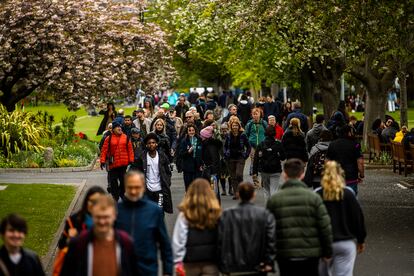
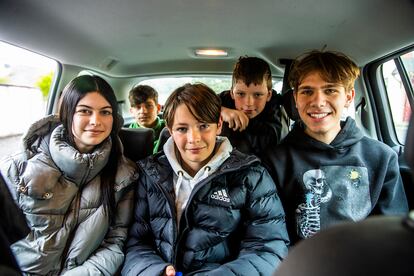
Sign up for our weekly newsletter to get more English-language news coverage from EL PAÍS USA Edition
Tu suscripción se está usando en otro dispositivo
¿Quieres añadir otro usuario a tu suscripción?
Si continúas leyendo en este dispositivo, no se podrá leer en el otro.
FlechaTu suscripción se está usando en otro dispositivo y solo puedes acceder a EL PAÍS desde un dispositivo a la vez.
Si quieres compartir tu cuenta, cambia tu suscripción a la modalidad Premium, así podrás añadir otro usuario. Cada uno accederá con su propia cuenta de email, lo que os permitirá personalizar vuestra experiencia en EL PAÍS.
¿Tienes una suscripción de empresa? Accede aquí para contratar más cuentas.
En el caso de no saber quién está usando tu cuenta, te recomendamos cambiar tu contraseña aquí.
Si decides continuar compartiendo tu cuenta, este mensaje se mostrará en tu dispositivo y en el de la otra persona que está usando tu cuenta de forma indefinida, afectando a tu experiencia de lectura. Puedes consultar aquí los términos y condiciones de la suscripción digital.
More information
Últimas noticias
What is known about the Interoceanic Train derailment in Oaxaca
Trump turns a Minnesota fraud allegation into ammunition for his MAGA army against Democrats
The year Trump created 1.6 million undocumented immigrants
Russia threatens to break off negotiations after accusing Ukraine of attacking one of Putin’s residences
Most viewed
- Reinhard Genzel, Nobel laureate in physics: ‘One-minute videos will never give you the truth’
- Oona Chaplin: ‘I told James Cameron that I was living in a treehouse and starting a permaculture project with a friend’
- Pablo Escobar’s hippos: A serious environmental problem, 40 years on
- Chevy Chase, the beloved comedian who was a monster off camera: ‘Not everyone hated him, just the people who’ve worked with him’
- Why we lost the habit of sleeping in two segments and how that changed our sense of time
